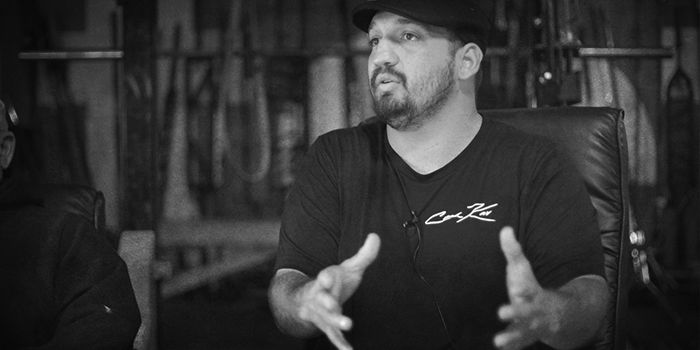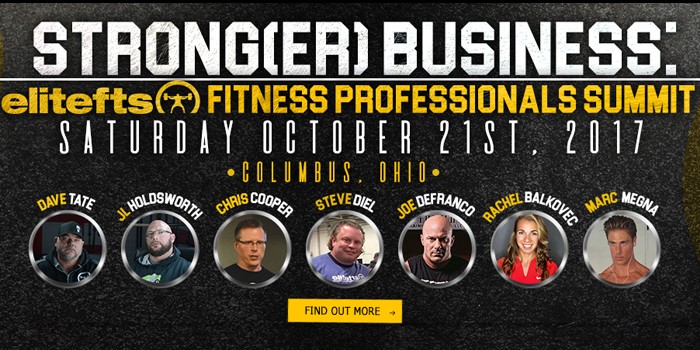
Last year, we shared the story of Justin Kavanaugh ("Coach Kav") and his return to the elitefts S4 Compound. Earlier this month Coach Kav came to visit yet again — and this time he sat down with Dave and elitefts Editorial Intern Robert Cox for a Q&A session. For today's video, Coach Kav answers a question from JL Holdsworth about marketing and branding:
"Can you discuss the branding and power of social media today compared to the branding that was 15 years ago?"
Kav starts by saying that your brand is your business, and the most important thing is that people know who you are. Kav looks at any business as five systems, and although it's in system two (sales) that you acquire your clients, it's in system one (marketing) that your client becomes aware of your business. This is and always must be the first step.
He breaks marketing into two categories: organic marketing and paid marketing. Organic marketing includes online mediums (such as Facebook, YouTube, and other social media) and offline mediums (such as interacting with potential customers in-person). The goal is for these to be synergistic; your personal ability to offer someone a service must match the marketing they see in the online space.
WATCH: Q&A with Coach Kav — The Reason for Motivational Quotes and Slogans
For paid marketing, Coach Kav says it is all about having a specific target prospect, namely what he refers to as a "three-ring prospect." The first ring for this prospect is geographic location; the simplest way to put it is that your first goal should be to "own your backyard" and win those customers close to you. The second ring is the demographic quality: Do they have the money? Are they playing the sport? The third and final inner ring is the psychographic quality: What are they thinking? How do they feel about your brand compared to a competitor?
Once you figure these things out, you're ready to develop a marketing strategy. Without identifying your target consumers first, any marketing you engage in is the same as throwing shit at the wall and hoping it sticks.
Coach Kav goes on to discuss the specifics of how he goes about branding with organic and free marketing, as well as exclusive use of targeted advertising for brick and mortar businesses. He emphasizes the importance of having a quality product that creates word-of-mouth referrals, and being consistent in your brand over time.
Dave then gives his answer to the question, using a bit of history about elitefts and the branding mistakes that he has made. He says that, first and foremost, your branding starts with your name. For elitefts, this happened through an abbreviation of a previous name of the company that stuck with customers. Whatever you choose, you have to make sure there's a reason for it and it fits with the brand you're trying to build.
Naming your company then starts a series of questions you need to answer: What is your brand identity? How does this compare to the branding of other companies? Will you run into legal or trademark issues? If you don't do your due diligence upfront and ensure you can truly own your brand, you will pay for it in the long run through either customer loss (best case) or serious legal action (worst case).
Using the history of elitefts and how the company has evolved in the last two decades, Dave gives details about return on marketing investment and how the value of money spent on advertising is very different than the value of the money brought in from advertising. It is your responsibility as a business owner to know how, where, and when to invest your marketing budget. On this topic, Dave and Coach Kav discuss how to use return on investment data and the core competencies of your business to know how to build your brand presence.
The final topic of the video is social media, about which Dave and Coach Kav discuss both the benefits (free exposure, building a community, easy communication) and the hindrances (loss of context, bad advice, public ridicule).









